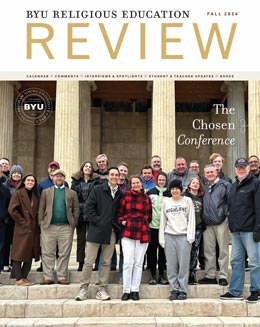As the commissioner of the Church Educational System (CES), Elder Clark G. Gilbert stated, “We ask our universities to be different from the world and from each other.”[1] While all institutions within the CES share a similar vision to develop disciples of Jesus Christ, each entity also has a distinct role to play within the larger system. He outlined those distinct roles as follows:
- BYU is the educational ambassador or flagship brand for CES, tasked with producing high-quality teaching and research.
- BYU–Idaho is the educator with a laser focus on teaching excellence with emphasis on meaningful connections between faculty and students.
- BYU–Hawaii is the Asia/
Pacific capstone that is tasked with providing educational opportunities for students in Asia and the Pacific Rim. - Seminaries and Institutes (S&I) is the spiritual anchor with responsibility to teach hundreds of thousands of students across the world.
- Ensign College is the applied curriculum provider focused on helping students quickly earn certifications toward meaningful work early in their educational process.
- BYU Pathway Worldwide is the youngest member of the CES family. They will soon have more students enrolled than all the other CES universities combined (not counting Institutes of Religion). They are the access provider offering an affordable, scalable, high-quality education to people all over the world.
While these differences and distinctions are important, it is also vital for all CES entities to maintain focus on what we all share and have in common, and that is a need to provide religious education that will build enduring discipleship in the rising generation. In June of 2019, the Board of Education produced a document titled “Strengthening Religious Educations in Institutions of Higher Education” (SRE).
The SRE document states that our purpose as religious educators is to teach the restored gospel of Jesus Christ directly and devotedly from the scriptures and modern prophets in a way that helps each student build faith in Heavenly Father and Jesus Christ, the gospel and Church, Joseph Smith and other modern prophets; become lifelong disciples; and strengthen abilities to find answers and resolve doubts that arise. The SRE also provides principles and guidelines for how to assess our work and how to make hiring and promotion decisions.
With the SRE document and Elder Gilbert’s encouragement, the institutions within CES have begun to work together more collaboratively as a true system rather than functioning as separate entities. The past five years have seen many productive interactions between CES institutions. A religious educators committee that previously met annually now has leaders from S&I, BYU, BYU–Idaho, BYU–Hawaii, Ensign College, and the commissioner’s office that have met three times annually for the past two years to discuss ways to better coordinate and collaborate efforts.
One major initiative that came from this group was organizing a large-scale CES Religious Educators Conference that took place at Brigham Young University on June 18, 2024. It had been over twenty years since the last weeklong CES Conference (formerly known as CES Symposium) was held on BYU’s campus with thousands of in-person attendees.
This year’s conference was intentionally simplified and scaled back to one day and had only 850 in-person attendees from the Church universities and local S&I faculty. The majority of those participating joined remotely through digital conferencing links. The focus of the conference was on amplifying prophetic voices in our work.
The keynote speaker was Elder Dale G. Renlund. He shared four vital gospel nutrients all learners need to combat spiritual malnutrition. The general sessions featured Commissioner Gilbert; R. Kelly Haws (associate commissioner) in a panel discussion with all the university presidents (C. Shane Reese, BYU; Alvin F. Meredith III, BYU–Idaho; John S. K. Kauwe III, BYU–Hawaii; Brian K. Ashton, BYU Pathway Worldwide; Bruce C. Kusch, Ensign College; and Chad H Webb, S&I administrator); a message from Chad Webb about the reach and impact of S&I; and finally, a panel discussion from college deans about department and individual efforts to amplify prophetic messages (Scott C. Esplin, BYU; David R. Peck, BYU–Idaho; Aaron Shumway, BYU–Hawaii; Rory C. Bigelow, S&I; and Brad Streeter, BYU director of AV Services). The conference also provided twelve breakout sessions in various formats and modalities (single presenter, team teachers, panel discussions, and previously recorded lessons).
Recordings were made of all proceedings to allow personnel around the world to participate in a setting and at a time that best fits local needs. The general session recordings can be found here: www.churchofjesuschrist.org/
The breakout session videos can be found here: www.churchofjesuschrist.org/
Another CES Conference has been scheduled for June 12–13, 2025. Additionally, we are working on other projects that have potential to be implemented as a system, such as: exploring possibilities for a unified policy for transferring religion credits between CES entities, looking for a set of student ratings questions that could be added to existing institutional surveys for all religion classes, improving every institution’s recruitment and hiring through better public outreach and relationship building within CES.
This is a unique time in the history of the CES. We are confident that the Lord is guiding both the collaborative efforts mentioned above as well as those initiatives being pursued by each individual institution with CES. Many of us believe our best days as a system are yet to come.
Notes
[1] Rachel Sterzer Gibson, “Elder Gilbert Explains Why the Church Educational System Must Have the Courage to Be Different,” Church News, August 17, 2024.
